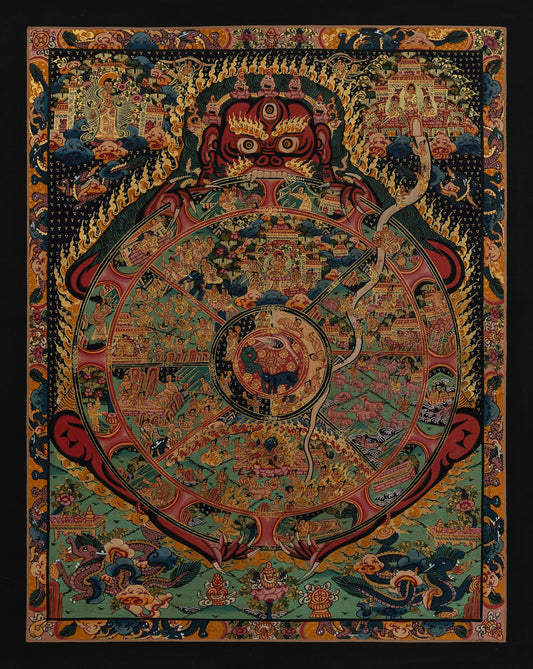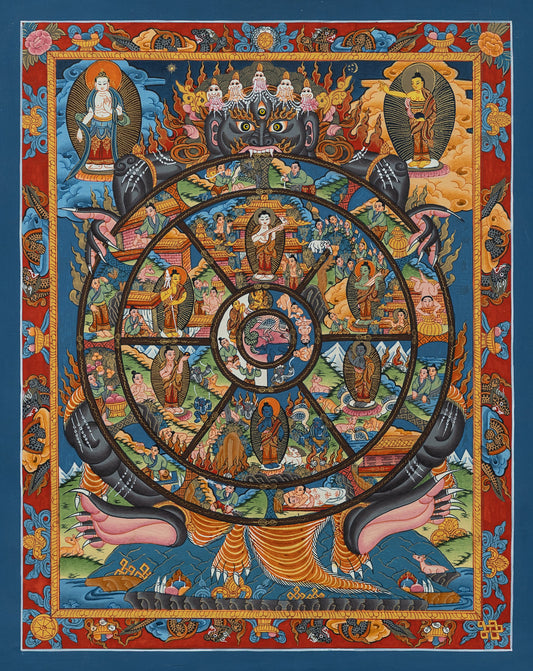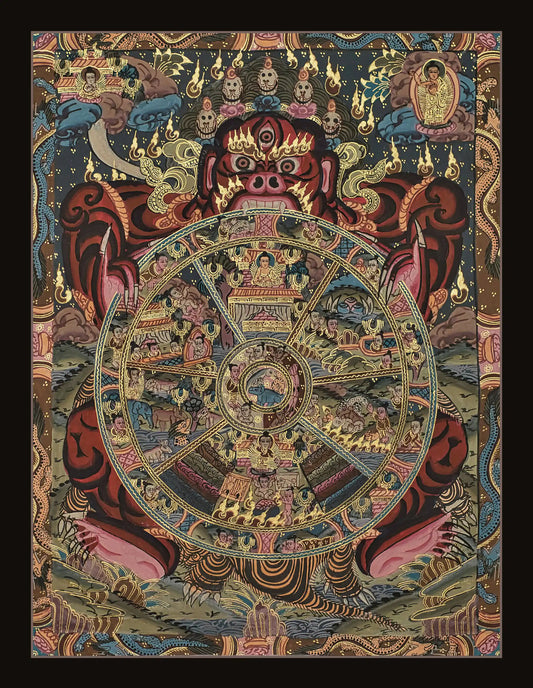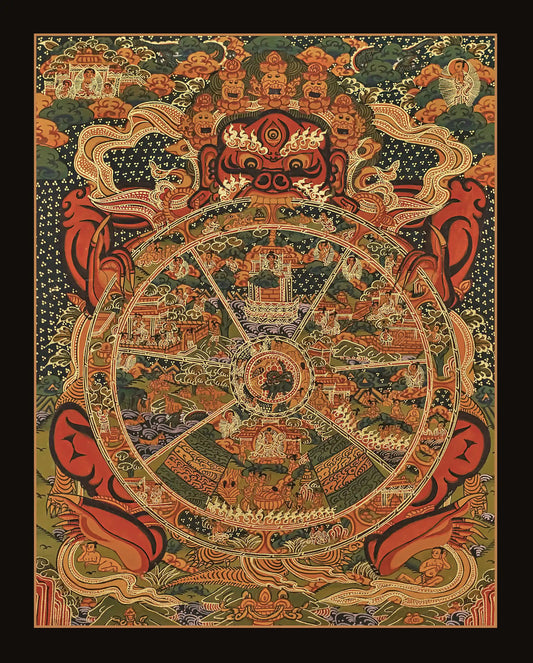Collection: Wheel Of Life Thangkas
The Wheel of Life (Bhavachakra) is a deep Buddhist symbol, which reflects the cycle of the Samasara: birth, death, and rebirth. Central Yama, the God of death, holds the wheel, with the realms of existence and the twelve links of dependent origin.
Owning a Wheel of Life Thangka is more than decoration. It’s a meditation aid, a teaching tool, and a sacred piece of art that adds depth and meaning to your home, meditation room, or healing space. Explore our collection below and bring timeless Buddhist wisdom into your life.
-
Wheel of Life Thangka - (15" * 19")
Regular price $192.00 USDRegular priceUnit price / per$213.00 USDSale price $192.00 USDSale -
Wheel of Life Thangka - (11" * 14")
Regular price $244.00 USDRegular priceUnit price / per$271.00 USDSale price $244.00 USDSale -
Wheel of Life Thangka - (10" * 13")
Regular price $212.00 USDRegular priceUnit price / per$236.00 USDSale price $212.00 USDSale -
Wheel of Life Thangka - (20" * 25")
Regular price $300.00 USDRegular priceUnit price / per$333.00 USDSale price $300.00 USDSale -
Wheel of Life Thangka - (15" * 20")
Regular price $188.00 USDRegular priceUnit price / per$209.00 USDSale price $188.00 USDSale -
Wheel of Life Thangka - (16" * 20")
Regular price $288.00 USDRegular priceUnit price / per$320.00 USDSale price $288.00 USDSale -
Wheel of Life Thangka - (17" * 24")
Regular price $410.00 USDRegular priceUnit price / per$456.00 USDSale price $410.00 USDSale -
Wheel of Life Thangka - (17" * 24")
Regular price $410.00 USDRegular priceUnit price / per$456.00 USDSale price $410.00 USDSale -
Wheel of Life Thangka - (19" * 24")
Regular price $332.00 USDRegular priceUnit price / per$369.00 USDSale price $332.00 USDSale -
Wheel of Life Thangka - (19" * 24")
Regular price $332.00 USDRegular priceUnit price / per$369.00 USDSale price $332.00 USDSale -
Wheel Of Life Thangka - (11" * 14")
Regular price $160.00 USDRegular priceUnit price / per$178.00 USDSale price $160.00 USDSale -
Wheel of Life Thangka - (10" * 13")
Regular price $160.00 USDRegular priceUnit price / per$178.00 USDSale price $160.00 USDSale
Why Choose a Wheel of Life Thangka?
A Wheel of Life Thangka holds layers of symbolism that make it both spiritual and practical for modern living:
- Meditation Tool: Reflect on life’s impermanence and discover clarity within.
- Teaching Aid: Used by Buddhist masters to explain samsara and the path to freedom.
- Hand-Painted Heritage: Crafted with mineral colors and traditional Himalayan artistry.
- Sacred Décor: Adds beauty, depth, and meaning to your personal or spiritual space.
When you purchase from us, you’re not just buying art—you’re supporting Nepali artisans and preserving an ancient spiritual tradition. Shop now and own a meaningful piece of Buddhist wisdom.
FAQs for Wheel Of Life Thangkas
1. What does the Wheel of Life represent?
It illustrates the Buddhist concept of samsara—the continuous cycle of birth, death, and rebirth—and the path toward liberation. If you’d like a deeper explanation of the symbols and meanings, you can explore our full guide to the Wheel of Life Thangka.
2. What does the Wheel of Life Thangka depict?
- Center: Three animals symbolizing the three poisons: ignorance, desire, and anger.
- Second layer: Depicts karma; positive and negative actions
- Third layer: Six realms of existence; gods, demi-gods, humans, animals, hungry ghosts, and hell beings.
- Outer circle: Twelve links of dependent origination, showing the cause of suffering.
3. Who holds the Wheel of Life in the Thangka painting, and why?
Yama holds the Wheel of Life. This symbolizes the impermanence and the uncertainty of death, reminding us that all beings remain in samsara until they attain liberation.
4. Are your Wheel of Life Thangkas hand-painted?
Yes. Every thangka is carefully hand-painted by skilled Nepali artists using traditional mineral colors and fine cotton canvas.
Explore Other Thangka Categories
-
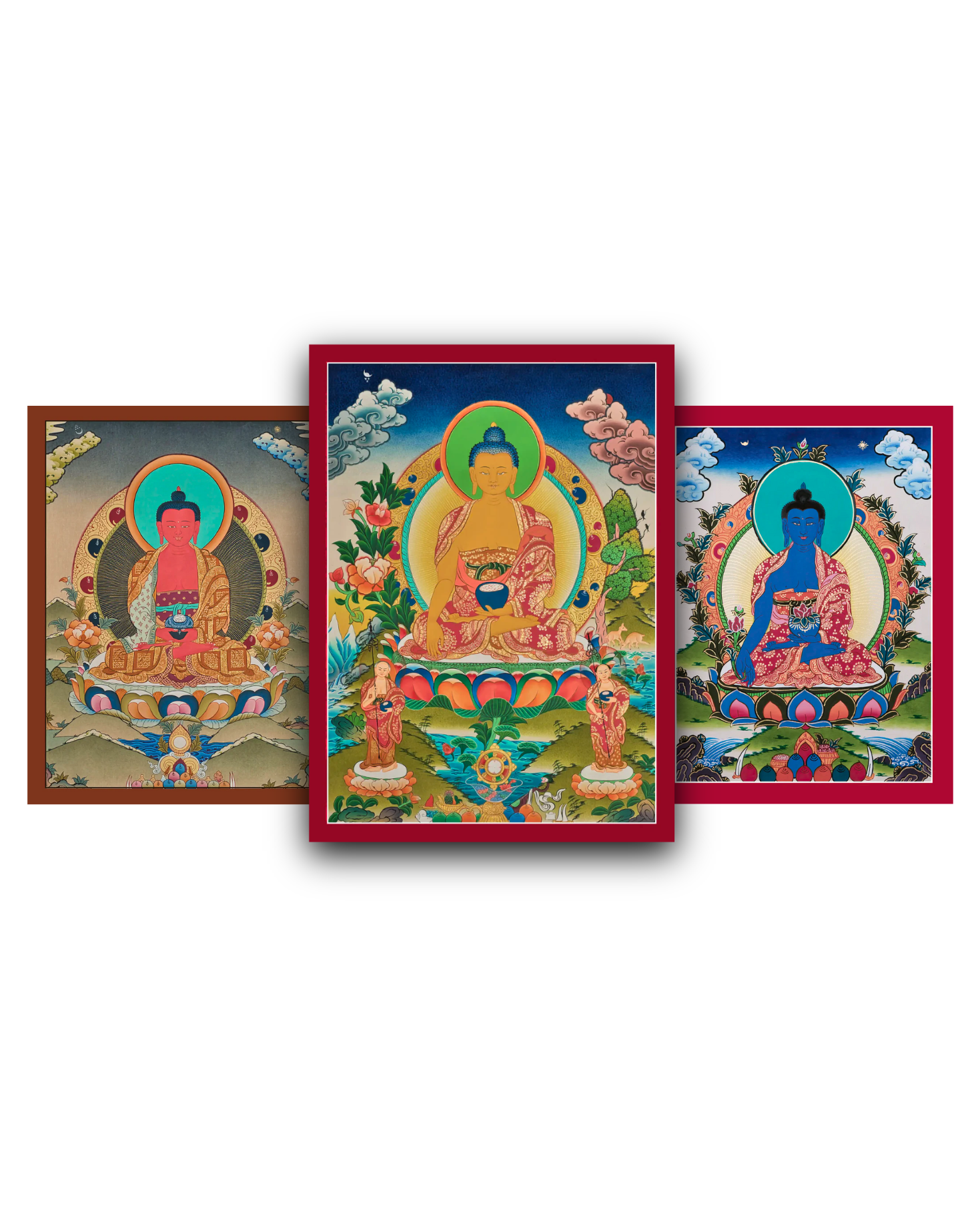
Buddha Thangka Paintings Collection
Welcome to our Buddha Thangka Paintings Collection, where sacred art meets timeless...
-
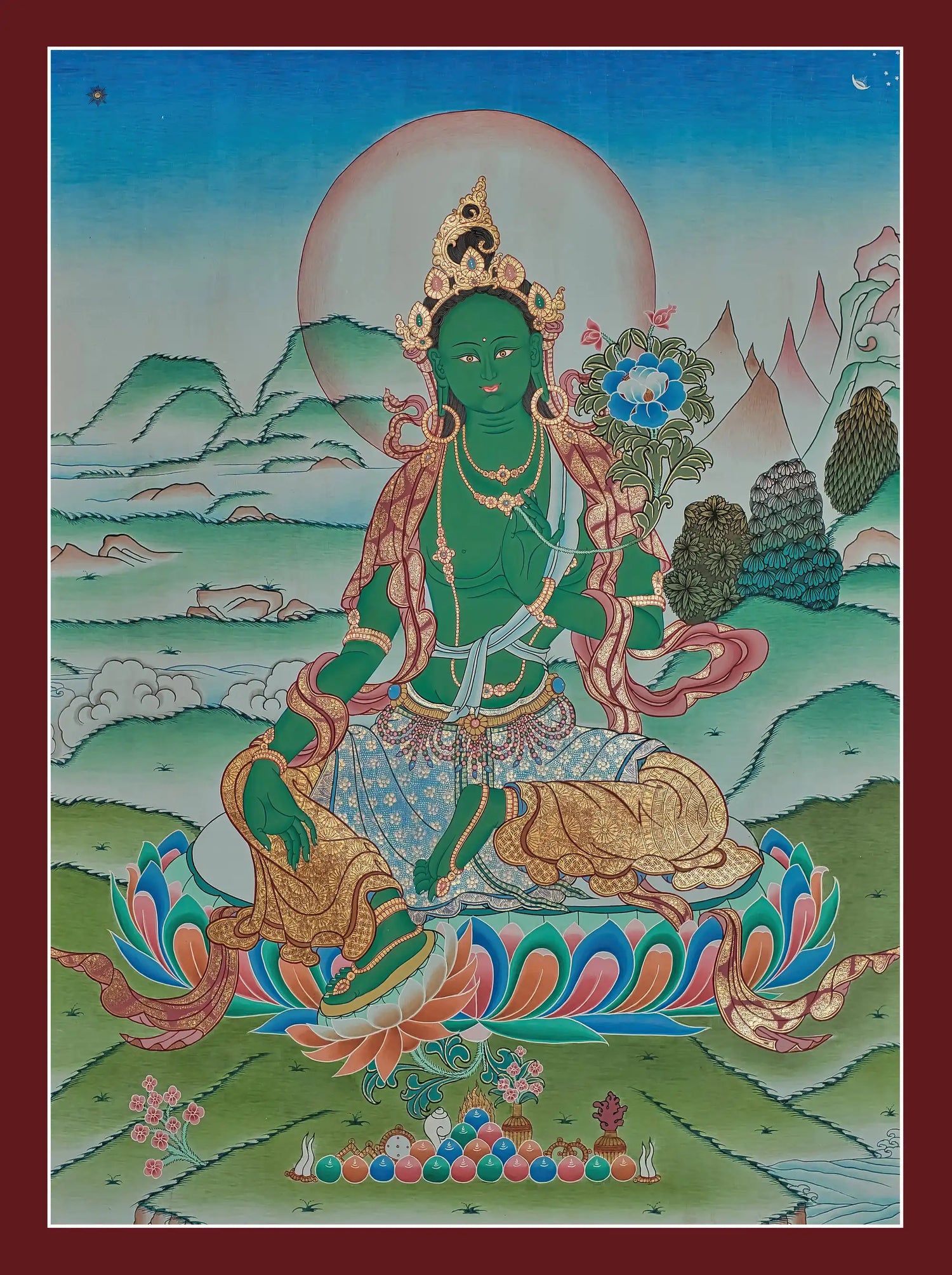
Bodhisattva Thangkas and Paintings
Bodhisattva thangkas and paintings bring the presence of enlightened beings into your...
-

Buddhism Deities Thangkas
A Deity Thangkas are more than just art—they show powerful figures from buddhist...
-
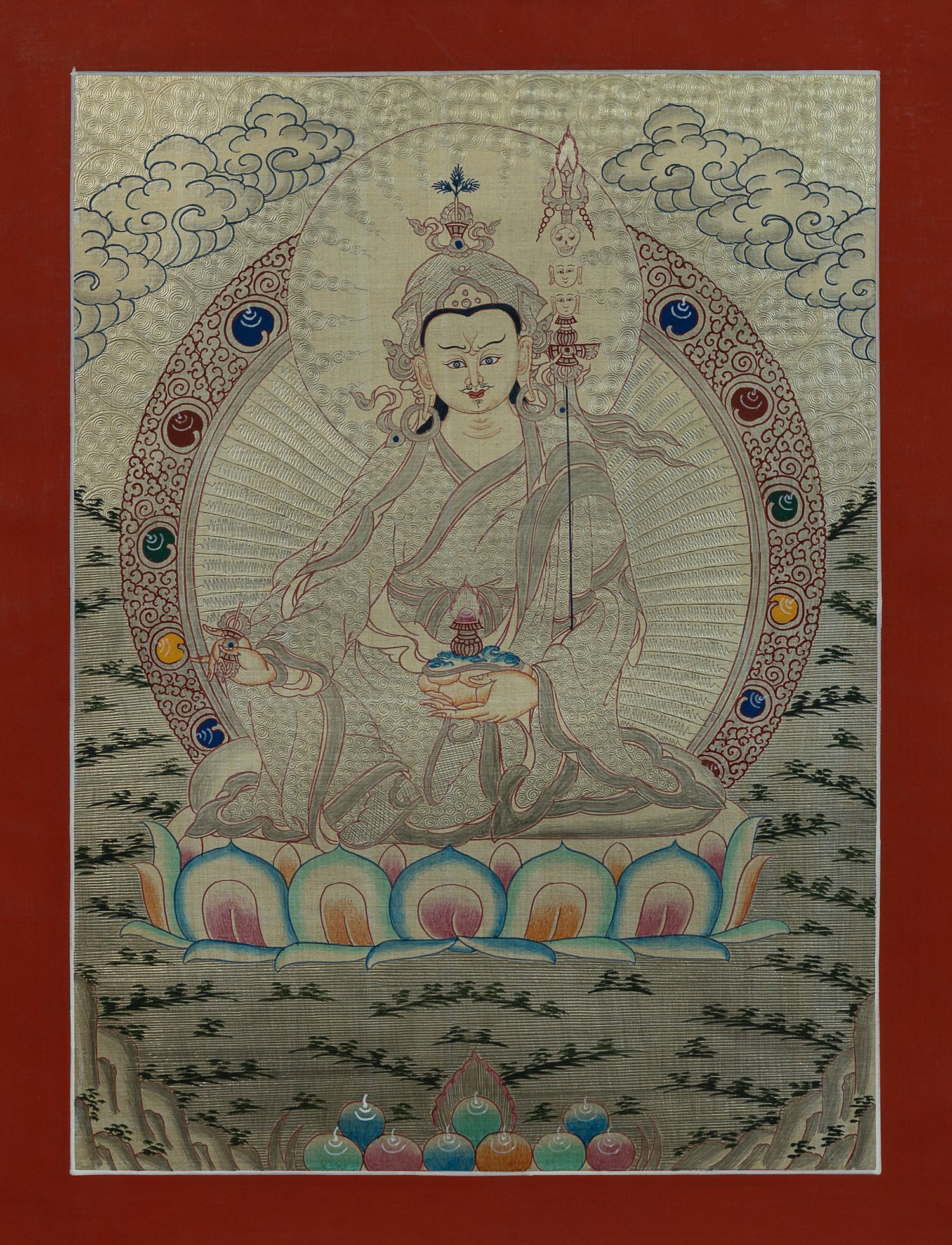
Guru Rinpoche Thangkas
Guru Rinpoche, or Padmasambava, is the revered "Buddha" who introduced Vajrayana teachings...
-
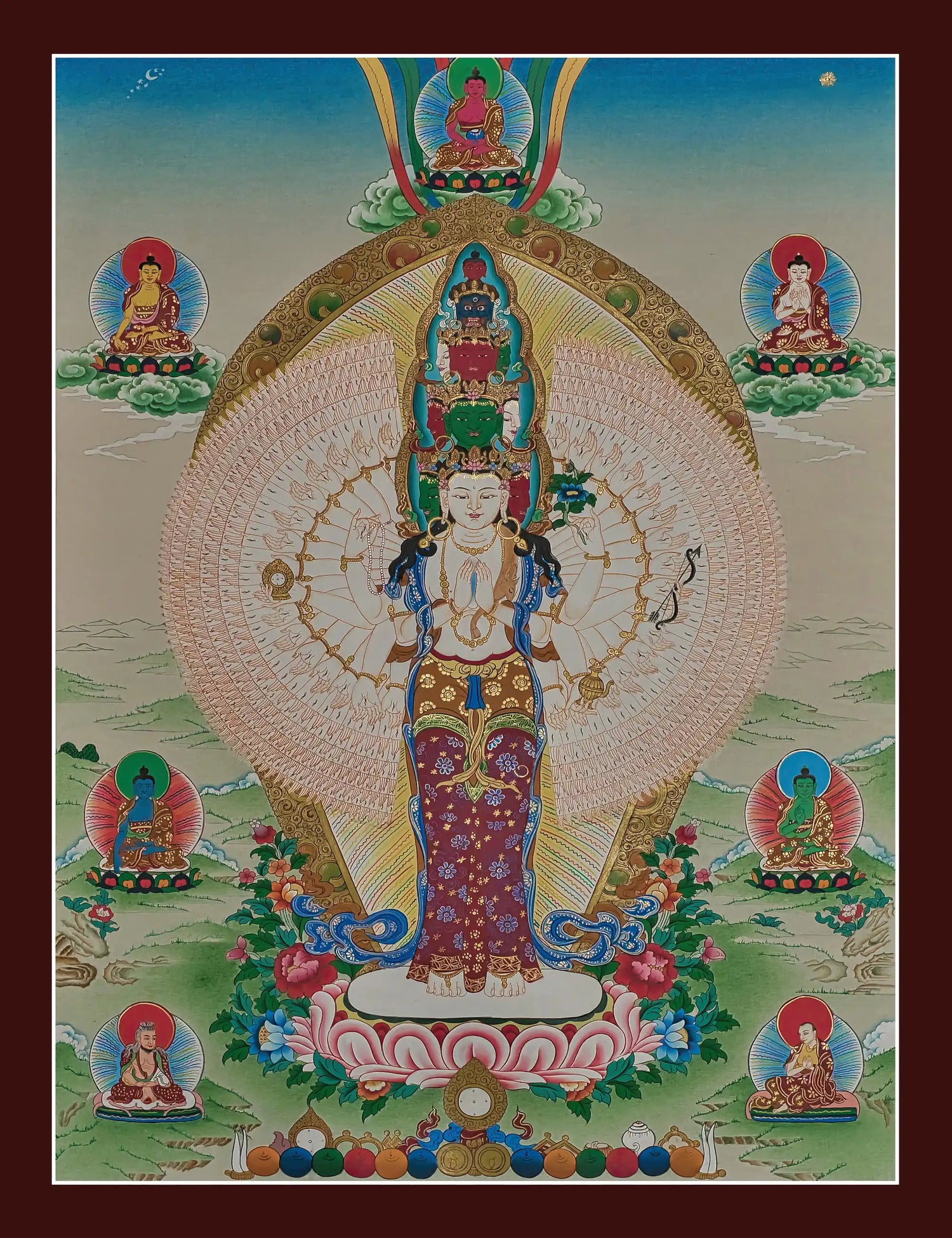
Exclusive Thangkas Collection
Exclusive Thangkas Collection
-
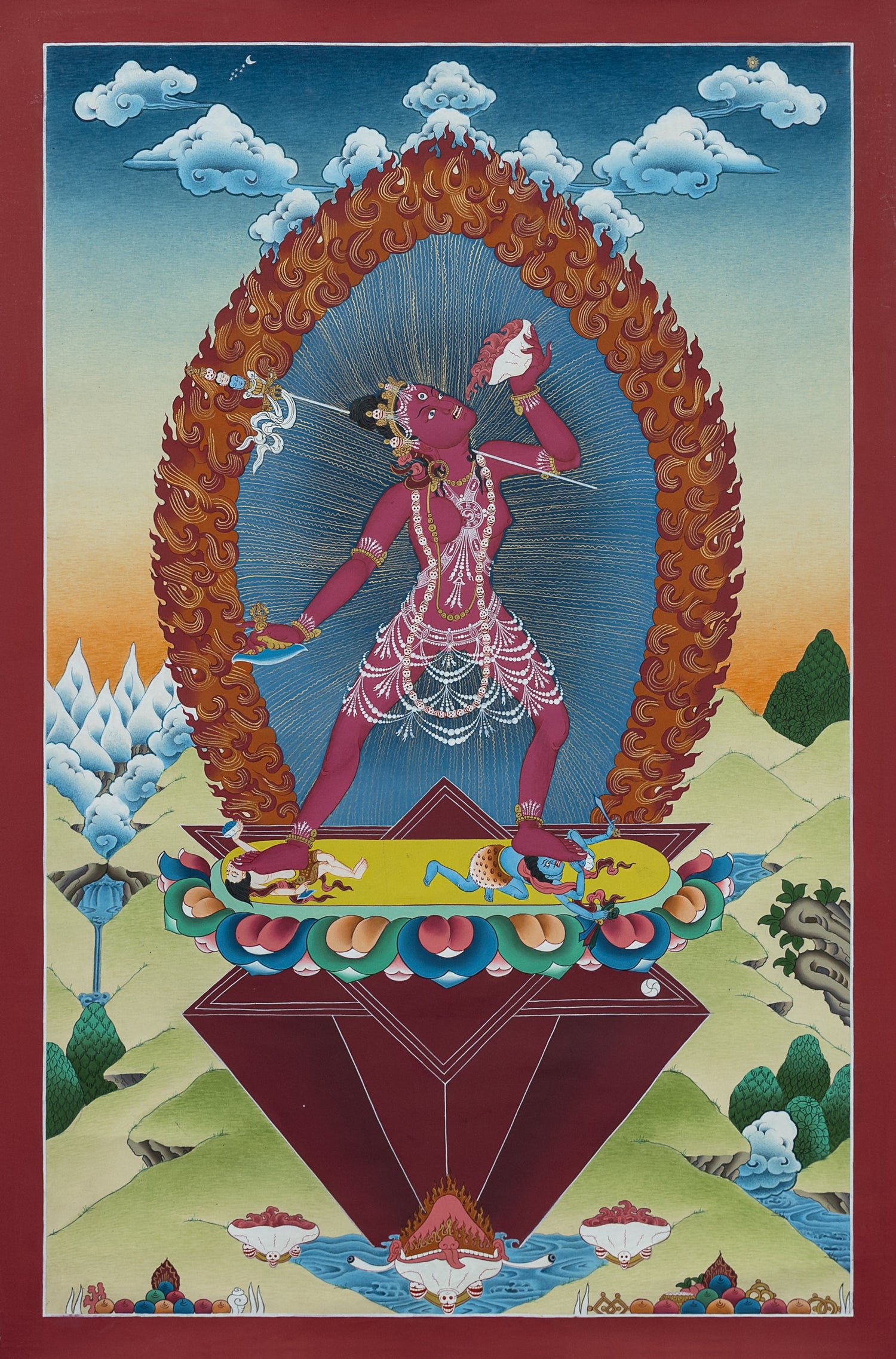
Dakinis and Yoginis
These beautiful thangkas celebrates the sacred energy of Dakinis and Yoginis, feminine...

